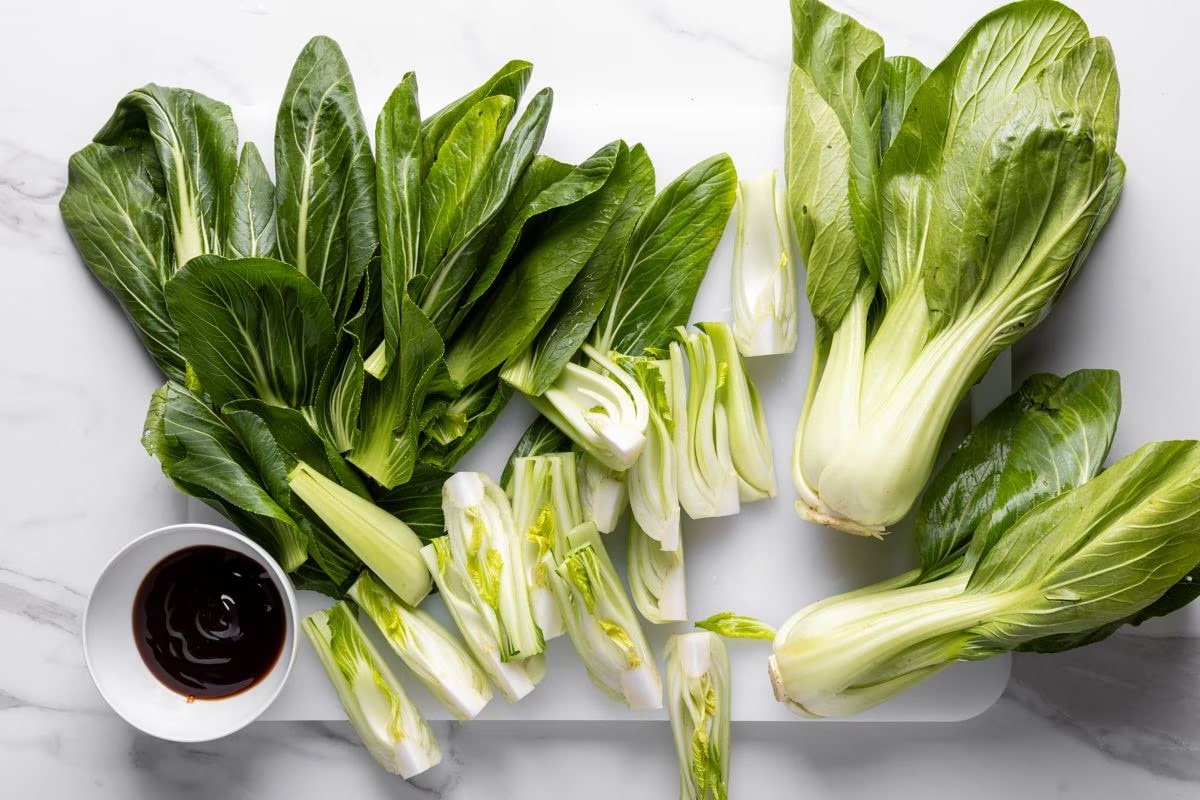
34 interesting facts about Bok choy
- 👁️ 288
Bok choy, a leafy green vegetable often associated with Chinese cuisine, has gained international recognition for its versatility, nutritional benefits, and distinctive flavor. Belonging to the cruciferous family, it shares lineage with broccoli, kale, and cabbage, showcasing a unique blend of textures and tastes. Bok choy has been cultivated in China for thousands of years, becoming a staple in various Asian dishes, from stir-fries to soups. Its rise in popularity across the globe can be attributed to its health benefits, ease of cooking, and adaptability to different culinary traditions. Here are 34 interesting and informative facts about bok choy that highlight its cultural significance, health benefits, and culinary uses.
- Bok choy originated in China over 5,000 years ago and is considered one of the oldest vegetables in Asia.
- The name “bok choy” comes from the Cantonese dialect, meaning “white vegetable” due to its white stalks.
- There are over 20 varieties of bok choy, ranging in size, color, and taste.
- Bok choy is a member of the Brassica family, making it a relative of broccoli, Brussels sprouts, and cauliflower.
- It is known for its high water content, which makes it a hydrating vegetable.
- Bok choy is a rich source of vitamins A, C, and K, essential for eye health, immune function, and blood clotting.
- The vegetable contains glucosinolates, compounds that have been studied for their cancer-preventive properties.
- Bok choy can be eaten raw or cooked, making it a versatile ingredient in salads, soups, and stir-fries.
- It has a mild taste with a slightly peppery flavor, allowing it to complement a wide range of dishes.
- The leaves and stalks of bok choy provide different textures in cooking, with the leaves being soft and the stalks crisp.
- Bok choy is low in calories but high in fiber, promoting digestion and weight management.
- The vegetable thrives in cooler weather, making it a popular choice for fall and winter gardens.
- Bok choy is often used in traditional Chinese medicine to promote bone health and circulation.
- Baby bok choy, a smaller variety, is prized for its tenderness and sweet flavor.
- The plant grows quickly, reaching maturity in just 30 to 50 days after planting.
- It is an excellent source of calcium, which is vital for maintaining strong bones and teeth.
- Bok choy’s vitamin C content makes it an antioxidant-rich food, helping to reduce inflammation and protect against chronic diseases.
- The vegetable’s adaptability has led to its incorporation into various cuisines beyond Asia, including American and European dishes.
- Bok choy contains selenium, a mineral not found in most fruits and vegetables, which plays a role in cognitive function and immunity.
- Despite its popularity, bok choy accounts for a small fraction of leafy green vegetable consumption worldwide.
- It can be steamed, boiled, stir-fried, or even grilled, offering diverse preparation methods.
- Bok choy pairs well with garlic, ginger, soy sauce, and sesame oil, common ingredients in Asian cooking.
- The vegetable is a good source of folate, important for pregnant women to support fetal development.
- Bok choy has been studied for its role in reducing the risk of cardiovascular disease thanks to its nutrient profile.
- In traditional Chinese cuisine, bok choy is often blanched and served with oyster sauce as a simple side dish.
- The stalks of bok choy can be used as a crunchy addition to salads, while the leaves are great for wilting in hot dishes.
- It is part of the “Chinese cabbage” category, although it differs significantly in appearance and taste from Napa cabbage.
- Bok choy’s popularity in Western countries surged in the late 20th century as interest in Asian cuisine grew.
- The vegetable’s leaves are a deep green color, which indicates a high level of chlorophyll and health-promoting antioxidants.
- Bok choy is also a source of iron, which is crucial for transporting oxygen in the blood.
- It can be preserved by pickling, a common practice in Korean cuisine with similar vegetables.
- The vegetable is also known as pak choi, bai cai, and white mustard cabbage.
- Bok choy contributes to skin health by providing vitamin E, an antioxidant that protects the skin from damage.
- Growing bok choy at home is relatively easy, making it a favorite among beginner gardeners and those with limited space.
Bok choy stands out as a nutrient-dense, flavorful, and versatile vegetable that transcends cultural and culinary boundaries. Its rich history as a staple in Chinese cuisine has paved the way for its global recognition and appreciation. From its health-promoting properties to its culinary flexibility, bok choy embodies the perfect blend of taste and nutrition. Whether incorporated into traditional Asian dishes or adopted into new culinary creations, it continues to win over the palates of people worldwide. As we uncover more about this remarkable vegetable, its role in a balanced diet and its contributions to global cuisine are likely to expand, ensuring that bok choy remains a cherished ingredient in kitchens around the world.
Bok choy, a leafy green vegetable often associated with Chinese cuisine, has gained international recognition for its versatility, nutritional benefits, and distinctive flavor. Belonging to the cruciferous family, it shares lineage with broccoli, kale, and cabbage, showcasing a unique blend of textures and tastes. Bok choy has been cultivated in…